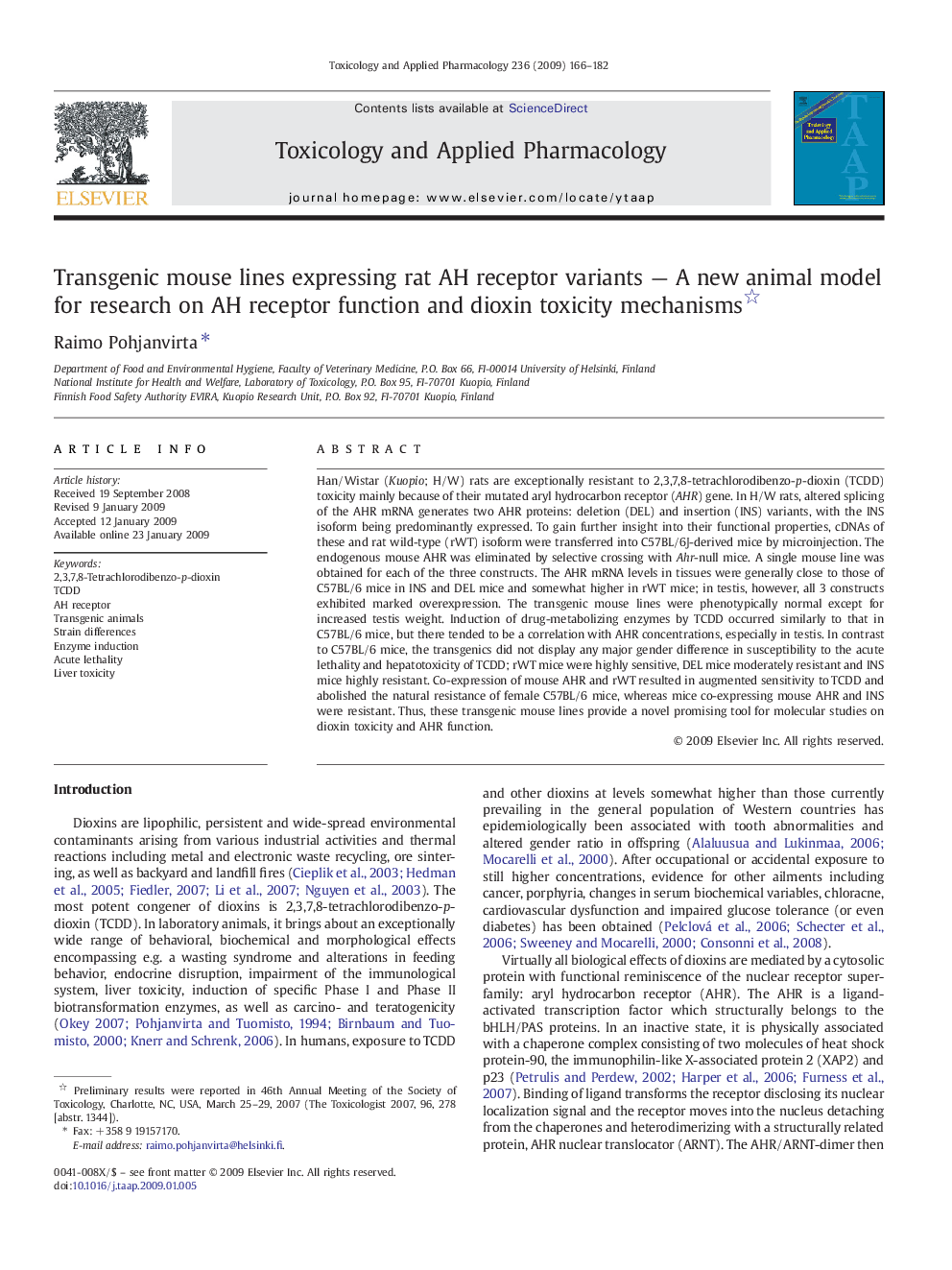| Article ID | Journal | Published Year | Pages | File Type |
|---|---|---|---|---|
| 2570663 | Toxicology and Applied Pharmacology | 2009 | 17 Pages |
Abstract
Han/Wistar (Kuopio; H/W) rats are exceptionally resistant to 2,3,7,8-tetrachlorodibenzo-p-dioxin (TCDD) toxicity mainly because of their mutated aryl hydrocarbon receptor (AHR) gene. In H/W rats, altered splicing of the AHR mRNA generates two AHR proteins: deletion (DEL) and insertion (INS) variants, with the INS isoform being predominantly expressed. To gain further insight into their functional properties, cDNAs of these and rat wild-type (rWT) isoform were transferred into C57BL/6J-derived mice by microinjection. The endogenous mouse AHR was eliminated by selective crossing with Ahr-null mice. A single mouse line was obtained for each of the three constructs. The AHR mRNA levels in tissues were generally close to those of C57BL/6 mice in INS and DEL mice and somewhat higher in rWT mice; in testis, however, all 3 constructs exhibited marked overexpression. The transgenic mouse lines were phenotypically normal except for increased testis weight. Induction of drug-metabolizing enzymes by TCDD occurred similarly to that in C57BL/6 mice, but there tended to be a correlation with AHR concentrations, especially in testis. In contrast to C57BL/6 mice, the transgenics did not display any major gender difference in susceptibility to the acute lethality and hepatotoxicity of TCDD; rWT mice were highly sensitive, DEL mice moderately resistant and INS mice highly resistant. Co-expression of mouse AHR and rWT resulted in augmented sensitivity to TCDD and abolished the natural resistance of female C57BL/6 mice, whereas mice co-expressing mouse AHR and INS were resistant. Thus, these transgenic mouse lines provide a novel promising tool for molecular studies on dioxin toxicity and AHR function.
Keywords
Related Topics
Life Sciences
Environmental Science
Health, Toxicology and Mutagenesis
Authors
Raimo Pohjanvirta,
